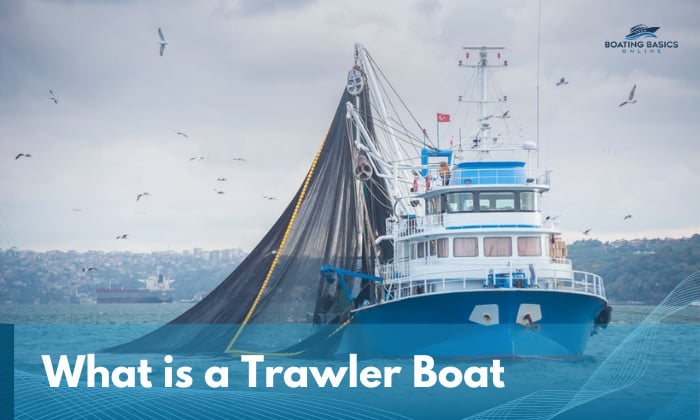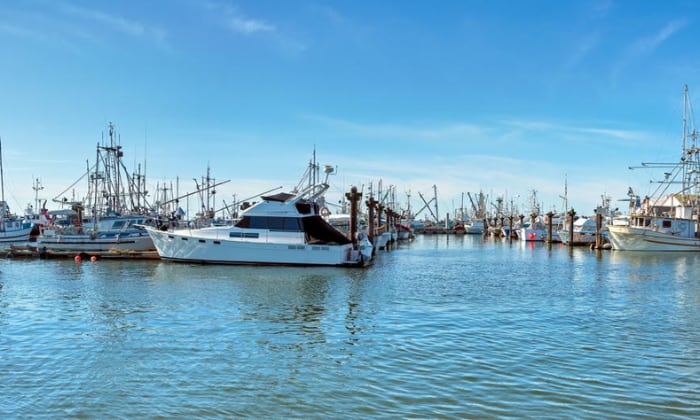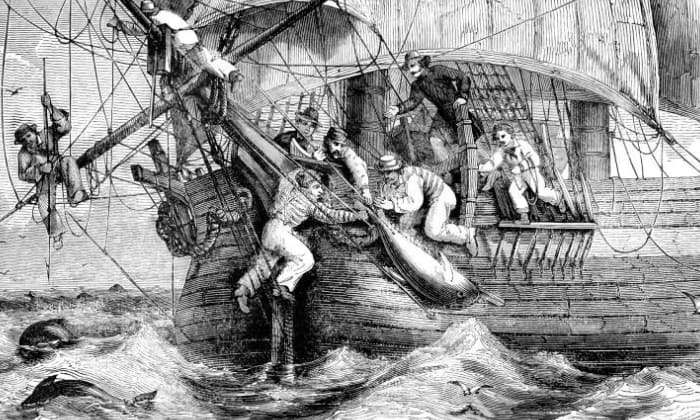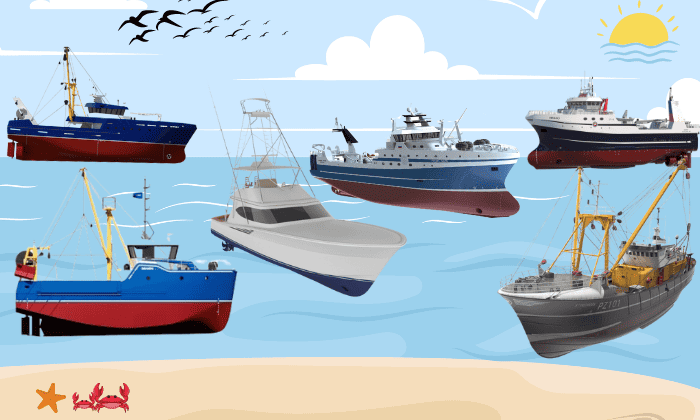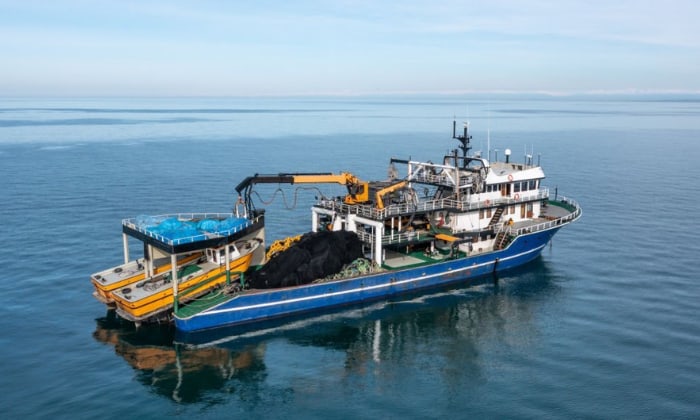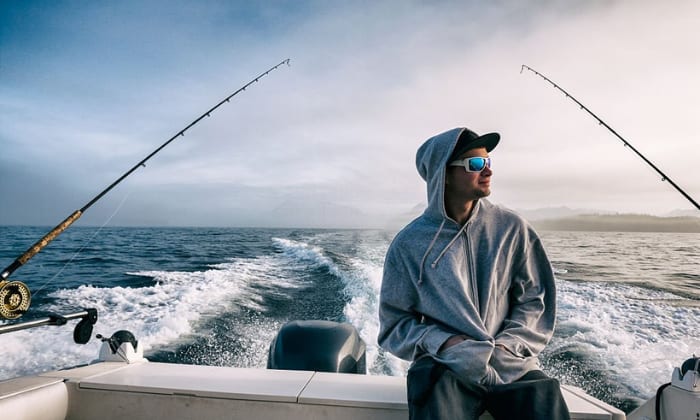If you spend a long time around most modern boats, you’ll likely come across the term “trawler”. So what is a trawler boat, exactly? These vessels were originally meant for “trawling”, which is the act of pulling a net either to catch fish or search for an object.
However, in today’s time, there are cruising trawlers used for recreation and even as long-term liveaboards. After all, these big-hulled watercrafts offer plenty of stability, space, and comfort that boost their versatility.
Table of Contents
Overview of What a Trawler Boat is
The modern trawler definition has become more complex since there’s now a clear divide in opinions about what an actual trawler boat is.
- Some boaters still stick to the original definition of a fishing vessel that drags a net on the water for the daily catch (aka a dragger).
- Others argue that as long as any vessel is used for that purpose, it can be considered a trawler.
The net is not used solely for fishing, though, as it continues to see robust application in marine research. Such research often connotes collecting marine organisms that would have been difficult to catch without the appropriate tools.
But is a sizable boat with a trawling net all it takes to be classified as a trawler? Not exactly.
In fact, gone are the days when people readily associate a trawler with a huge fishing boat. This is especially true if the subject is cruising.
Cruising trawlers rival yachts in the amenities they can provide to make your long-distance cruising experience in the open seas much more enjoyable. In fact, manufacturers have since married the two, as evidenced by any pleasurecraft trawler yacht you chance upon in your local docks and marinas.
Based on the facts that I’ve gathered above, here are the defining qualities of the modern trawler:
- Fairly huge and spans at least 26 feet up to 50 feet.
- Built with efficiency in mind.
- Typically equipped with a full displacement hull, which is ideal for sea-going vessels.
- Capable of spending extended periods on the water.
Such a trawler vessel can either be for fishing or cruising (or both).
History of Trawler Boats
The concept of pulling a net behind a boat to fish has been applied for centuries by fishermen. However, the modern trawler boats we know didn’t make their debut until the late 19th century.
The first workboats were mostly sail-powered and were used to catch bottom-dwelling fish and seafood. However, it didn’t take long for innovators like Benjamin Beneteau to introduce a gas-powered trawler, which proved more efficient and, hence, profitable.
Diesel engines were inevitably developed for the standard commercial trawler for more efficiency. Before long, cruising boat manufacturers, ever on the lookout for opportunities to stand out, adopted the trawler style, banking on the universal appeal of these hardy, highly practical watercraft.
As such fishing trawlers that didn’t see regular use were converted to recreational trawlers, especially toward the mid-20th century, cruising trawlers were born.
From there, improvements in hull construction material, specifically a shift to mainly fiberglass, occurred in the 1970s. This paved the way for the development of the modern trawler for ocean crossing, cruising, and fishing we all know and love.
Types of Trawler Boats
While I did say that trawler boats can be mainly categorized as either cruising trawlers or fishing trawlers, they both have other, numerous sub-types. Your standard fishing trawler boat can be classified based on the type of fish they catch and store or the manner of catching fish, for example.
The most important categories for fishing trawlers include:
- Stern Trawler – Trawl nets dragged over the stern using tools like winches and net drums. This replaced the standard side trailer and became the norm since its introduction.
- Side Trawler – The trawl nets are deployed over the watercraft’s sides. These are the more traditional trawlers used to catch bottom-dwelling fish (and the ones usually being swarmed by seagulls expecting a free sardine or two).
- Outrigger Trawler – Also known as beam trawlers, these trawlers rely on two long poles called booms that extend from each side of the boat, which support the heavy fishing nets being pulled behind the boat. Most shrimp boats fall under this category.
- Wet-fish Trawler – This can be any trawler with a feature that allows it to keep its catch fresh. The storage place is typically insulated and house ice packs to keep the fish fresh.
- Freezer Trawler – Trawlers with freezers to keep their fish fresh after catching fall under this type.
- Factory Trawler – one of the largest fishing vessels available, factory trawlers not only catch fish but also have all the tools and equipment to process and pack them (think of your local canned sardines undergoing this).
As for cruising trawlers, they can fall into either of these categories:
- Recreational Trawler or Trawler Yacht – most cruising trawlers fall under this type because there’s a clear focus on imparting luxury, comfort, and amenity suitable for long open-sea expeditions. Fishing only becomes a secondary feature, if it is at all available.
- Liveaboard Trawler – as their name readily suggests, these recreational trawlers can function like a home. As such, it should have enough room and amenities to make it appropriate for living aboard for an indefinite period.
Design and Features
The features you can expect from a trawler depend on its type. What’s sure is that a purpose-built trawler will likely prioritize practicality above everything. Luxury arguably becomes secondary, which makes a trawler yacht different from your average swanky boat.
- A trawler yacht will be designed with more versatility and self-sufficiency in mind, especially since it’s expected to last a long while at sea. As such, it prioritizes comfortable accommodations, space for supplies, fuel, water, and other essentials.
- On the other hand, a fishing trawler will naturally be more inclined to integrate dedicated fishing docks and positions – besides the myriad fishing equipment, devices, and tools necessary for catching.
Most trawlers obviously overlap in their design, though. As said above, most trawlers use a displacement hull with wide side decks, an upper deck, a comfy interior, and ample storage capacity.
Benefits of Owning a Trawler Boat
Many people can argue that owning any type of boat is always a plus. Still, trawlers undoubtedly bring more value to the table as proven by the following facts:
- You get to enjoy the versatility of these vessels, especially when making cruising and open-sea crossings.
- They’re highly accessible, safe, and stable boats compared to others.
- The fact that they’re slow can be a plus, especially if you’re the type of boater who wants to enjoy the ride rather than the destination.
- There are a lot of customizations and options to choose from as far as models go.
- Most can be used for both cruising and fishing. Considering all the space it offers, what’s stopping you from converting a trawler into a hybrid that accommodates both?
Conclusion
So summing up what we’ve discussed while answering, “What is a trawler boat?”, it’s typically a large, salty vessel that the boater-at-heart considers one of the most well-designed to ever sail the open seas. We owe that sentiment a lot to their sheer adaptability and efficiency when fulfilling their purpose (usually still fishing).
Is it any surprise that they were able to smoothly transition to being cruising watercraft, now that we think about it?

“My intention from the first day establishing Boating Basics Online is to provide as much help as possible for boaters who want to experience a first safe and convenient trip. So feel free to join us and share your beautiful journeys to the sea!”

